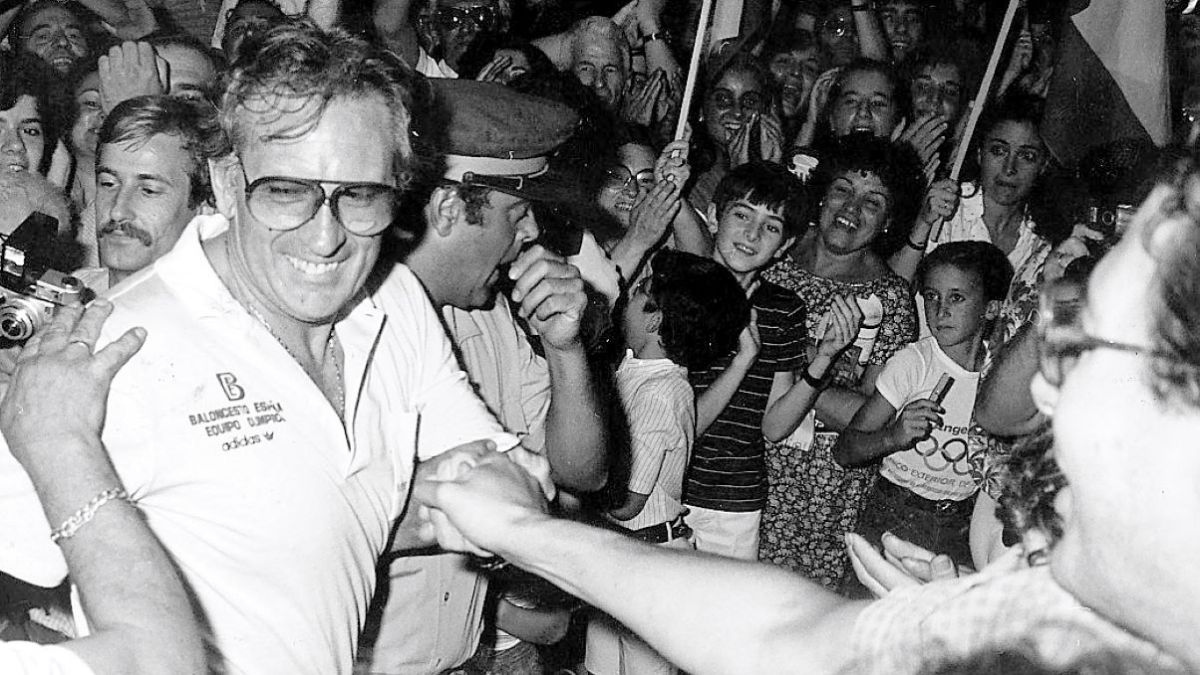Every great story has a beginning. A big Bang that orders and creates the way to the manifest destiny that the universe has foreseen. And in Spanish basketball, that origin was 41 years before the gold in the 2006 World Cup in Japan, in 1965, when an unforeseen turn took Antonio Díaz-Miguel (July 6, 1933, Alcázar de San Juan) to the National Team bench. It was only going to be 7 days, in a Friendly Tournament in Amsterdam (Netherlands), but Ed Jucker’s decision to resign from the position for the Cincinnati Royals of the NBA allowed the new member of the FEB Hall of Fame to extend his stay in the bench almost eternally. He was the coach of many, many, generations of Spaniards.
“My life has been around basketball”, assured to the TVE cameras this Real-born city, who took office at the age of 32 (November 5, 1965) and did not leave it until he was 59 (August 6, 1992). It was 26 years, 9 months and one day leading a team that fed on his methodical personality and his inexhaustible need to learn. To erase what made the National Team weak and to enhance the qualities that made it unstoppable. “We came from a basketball small. But there we began to project ourselves internationally and to go further. Spain began to make the great quantitative and qualitative leap that happily makes it one of the greats today ”, Emiliano Rodríguez, one of the stars of the national team in Mexico 1968, commented to EFE in 2020, the first of the six Olympic Games that Díaz directed. -Miguel continuously. A record to date.
His passion and his quality, his achievements and his exploits crossed the Spanish borders. “He was the best non-American coach of his time”, emphasized one of the great university technicians of always in the United States, Bobby Knight. “Spain had the best counterattack in the world,” stressed Lou Carnesecca, another of the NCAA bench monsters. Unimaginable words from outstanding teachers who were joined by a great friendship with Díaz-Miguel, the great pioneer, the first European coach who packed his bags to learn the North American style. And the country of basketball welcomed him seamlessly. So much so that even the father of all, the unforgettable John Wooden, taught him the mysteries that his UCLA Court.
The professor started as a student. First in Alcázar de San Juan (Ciudad Real) and then in Madrid, with Estudiantes and Real Madrid. At the end of the road, Bilbao and the Eagles. It was a short professional career, only six years. The reason, the bench called him. “Teaching was my great passion,” recalled Díaz-Miguel, who lived 431 matches with the Selection between Games (6), World Cups (4) and Eurobasket (13). His record, wonderful, at a time when Yugoslavia and the USSR made Europe tremble in their wake: an Olympic silver (1984) and three medals in the Eurobasket, two silvers (1983 and 1973) and a bronze (1991). And many shots to the edge, with six fourth places, five of them in a decade of the eighties vital for national basketball.
“He had great merit, because he was a visionary in the search for perfection. I’m not saying that the rest of the coaches in Spain didn’t like their team to play well, but Antonio, with his trips to the United States and his relationships with Lou Carnesecca, Dean Smith and Bobby Knight, learned the value of small details. He was the one who instilled in us that with the basketball that we did, if we stopped making mistakes, we could beat anyone on a good day ”, recalls for AS Juan Antonio Corbalán, who came to the National Team when he was only 16 years old. This was one of Díaz-Miguel’s secrets, giving young people an opportunity in a constant generational change that he learned in American universities.
Diaz-Miguel, who died in 2000 in Madrid, a victim of cancer, left nothing to chance. He established long concentrations and focused on physical preparation. He demanded punctuality and cleanliness from his pupils, in addition to complying with his six golden rules: do not lose the ball, catch all the rebounds, do not commit seven personals in each half, make only good shots, pass the ball to the pivots and score both first baskets of each time. Speed and agility above all else. “I was trying to make Spanish basketball go up and, I think, I have done my bit”, Confessed to Pedro Barthe (TVE) a special coach who came to play a game with Fidel Castrol and who was the first to defeat the United States, Yugoslavia and the USSR against Spain. This was Díaz-Miguel, the dawn of Spanish basketball.
